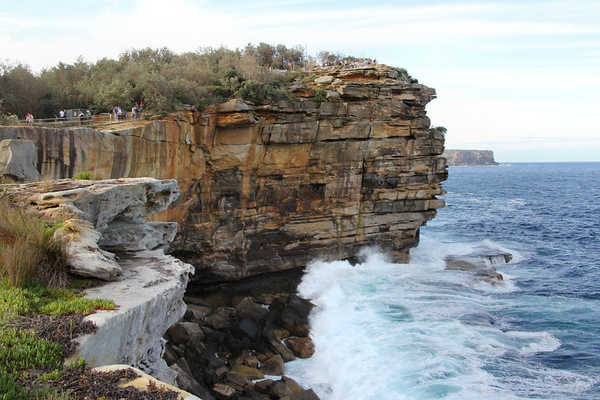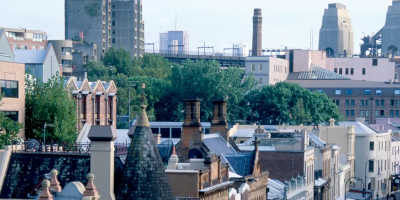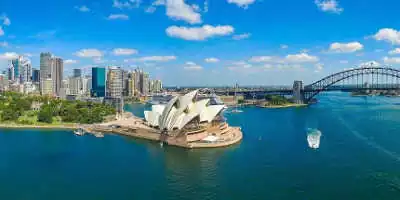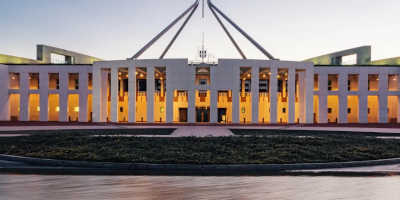The Gap, New South Wales
Watsons Bay, New South Wales 2030
Set on the South Head Peninsula to the east of Sydney City, The Gap is an impressive ocean cliff.
Rising up from the surrounding landscape, it looks out over the Tasman Sea and it proves to be a popular destination for tourists.
The History of The Gap
The Gap was originally owned by the Birrabirragal Aboriginal clan, who made up the wider community of the Darug people.
It wasn’t until 1788, when the First Fleet arrived from Europe, that its potential was realised. After settling, the British fleet set up a makeshift signaling station on the ridge right above The Gap. Its purpose was to give warning signs to the colony of any ships that were approaching across the Tasman Sea. The station was declared a formal signal station in 1790 and was used as it was up until 1871, when the Imperial British forces were withdrawn from the area.
After that, it became a military garrison, housing coastal artillery emplacements that would serve to defend the Port of Sydney.
In 1895, the area started to be used by the small but ever-growing Australian Army as a gunnery school and, in 1942, a radar training school was established nearby for the Royal Australian Navy to use.
Today, visitors can explore the cliff face and its surrounding, sometimes venturing up to the chapel at the peak that, in 1962, was dedicated to the service personnel who served at The Gap for many years.
Since 1982, it has formed an important part of Sydney Harbour National Park and, in 1990, it was opened to the public, who can stroll along the numerous stunning clifftop walks that it is now so well-known for.
Shipwrecks at the Gap
One of the worst maritime tragedies in Australia belongs to the Dunbar, a mid 19th century passenger ship that was carrying 122 people on board. In the year 1857, a night out at sea proved fatal as the ship crashed against the foot of The Gap, killing all passengers on board except one able seaman; James Johnson. The tragedy struck the still growing colony and after it, one of the longest funeral processions ever seen was held for the victims.
It was just 9 weeks later when the Catherine Adamson ship ran aground in Port Jackson that the public outcry for safer navigational facilities grew to its loudest ever. After these wrecks, the need for a lighthouse was evident and so forth, the Hornby Lighthouse was constructed.
The Scenery of The Gap
The Gap is a spectacular place to lookout from, and it boasts an eclectic selection of flora and fauna for visitors to discover. The cliff itself is made from Sydney Sandstone, making it a part of the Sydney Basin and home to numerous bird and animal species.
Here, you might spot skinks and eastern water dragons as they weave their way through the rocks, and you’re likely to see a collection of seabirds, such as the silver gull and the Pacific gull, both of which use the cliff face to make their nests in.
Nearby Attractions
Hornby Lighthouse is accessible via the South Head Heritage Trail which begins at Camp Cove. The need for a lighthouse was recognised after two wreckages. The first was the tragic wreck of the Dunbar in the late 1850s that took the lives of all but one passenger on board while traversing the rocks along Port Jackson. After the second wreckage of another ship in the same area, the lighthouse was built to aid the ships in passage. The iconic red and white lighthouse is the third largest built in New South Wales. It’s also a great spot for whale watching during the months of June through to November.
South Head Heritage Trail is a popular walking track that is around 1 kilometre’s return. This easy loop can take around 30 minutes to one hour to walk, and passes by attractions such as the distinctive Hornby Lighthouse, historic gun emplacements and begins by walking on a 1807s cobbled laneway passing Lady Bay Beach.
Vaucluse House is a 19th century mansion bought by William Charles Wentworth in 1827. However, this house was not always as illustrious as it may seem today. When it was first purchased, the building was a single storey cottage until Wentworth and his wife transformed it over a 50-year period. In 1915, Vaucluse House was listed as Australia’s first house museum and the grand estate can now be visited by members of the general public. Walking tours are also available and there is an onsite café available if you’re after light refreshments or high tea.
Camp Cove is a small swimming beach nestled within an exclusive neighbourhood near Sydney’s South Head. It’s a popular holidaying spot amongst families and beachgoers who come here to not only swim, but to kayak, scuba dive and snorkel. It’s also the site of the first landfall by Captain Phillip after he reached Botany Bay.
Where to eat
An institution in Watson’s Bay, Doyle’s on the Beach has been serving up traditional fish and chips thoroughfare to hungry locals and tourists since 1885. Now with restaurants opened up across Australia, you can’t take a trip to Sydney’s Watson’s Bay without stopping to try some freshly caught fish by the restaurant’s own fishermen. Using old-fashioned methods of retaining the fish and keeping them on ice while on the boat means that you’ll be eating fresh seafood that’s not only locally sourced but an integral part of the history of Sydney.











